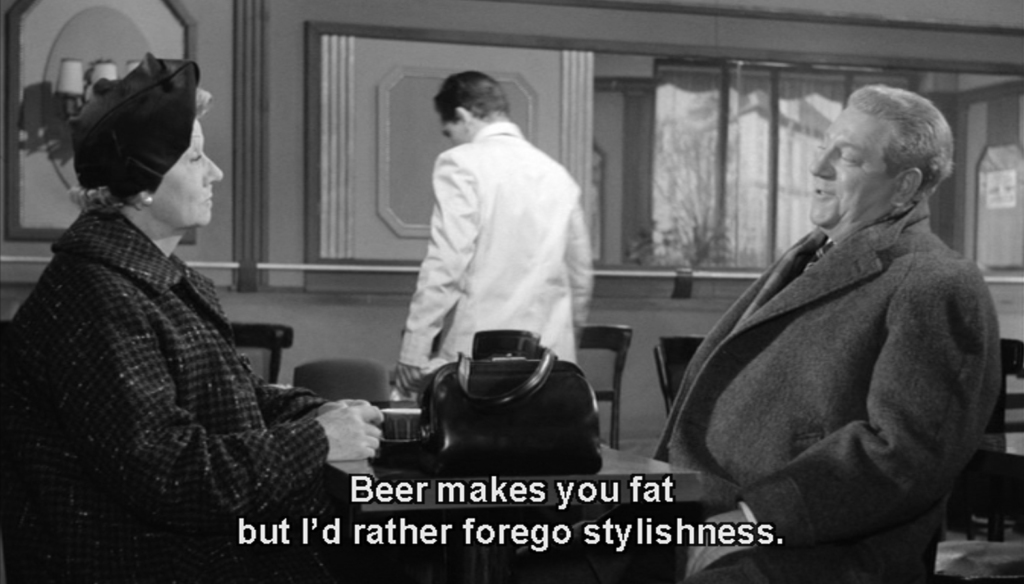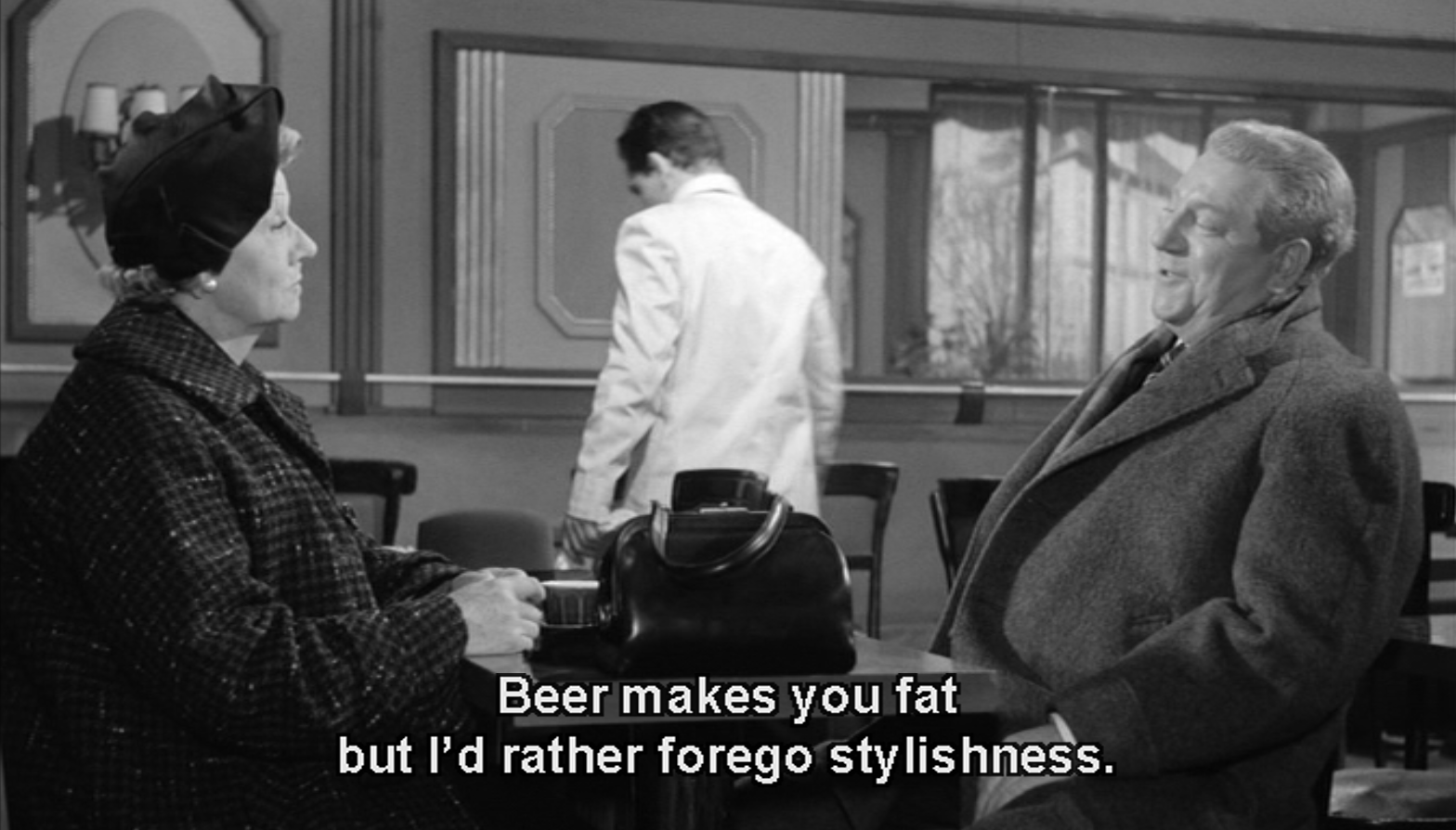Movie Review: Maigret and the St. Fiacre Case (1959) directed by Jean Delannoy (French title: Maigret et l’affaire Saint-Fiacre)
It’s difficult to imagine, but Jules Maigret (Jean Gabin) was not always a police commissioner. As a boy, he lived in the rural village of Saint-Fiacre, where his father was the steward for the chateau of the Count de Saint-Fiacre. He was in his early teens when his father died, and Jules was taken to Paris. Maigret has never lost his rose-tinted memories of the village. So when the now-widowed Countess de Saint-Fiacre (Valentine Tessier) tells him she has received a threatening letter, he is quick to take some time to visit.

The letter states that she will die before the end of Ash Wednesday Mass, an oddly specific threat. It is possibly just meant to scare her, but always there is the possibility of a real menace, as experienced policeman Maigret well knows. The Countess introduces him to the staff as an antique dealer, a plausible excuse. The once-sumptuous chateau has been stripped of much of its art and fancy furniture, and its library of the more salable books, but there are a few choice pieces remaining. The Countess’ secretary Lucien Sabatier (Robert Hirsch) supplements his income by writing art criticism for the nearby small city of Moulins’ newspaper. He also gives the Countess her medical injections at night, but all seems to be in order so Maigret gets some sleep, waking up and dressing by 7:20 A.M.
Alas, Maigret has let one vital fact slip his mind. On Ash Wednesday in rural France, the first Mass starts at 7 A.M. The Countess has already left! Maigret has a little relief when he arrives at the church and his old friend is still alive, but after the Mass is complete she does not move. And when Maigret checks on her, the Countess is dead!
Dr. Bouchardon (Paul Frankeur), the Countess’ personal physician, is quick to write off the death as an ordinary heart attack. After all, she’d had a heart condition for some time now. Maigret thinks otherwise–a heart attack predicted so precisely is nothing ordinary! Before much else can be done, Count Maurice de Saint-Fiacre (Michel Auclair), the Countess’ wastrel son, arrives. There’s been a false report of his suicide printed in the Moulins newspaper, and he wants to get to his mother before she hears of it. He supposedly was not in the village last night, and claims to be shocked that she’s dead.
Sabatier was in Moulins last night, at the newspaper, but claims to know nothing of the false report. The priest (Michel Vitold) is acting suspiciously. The new steward Gaultier (Camille Guérini) has grudges against both Sabatier and Count Maurice. There’s plenty of suspects, and Maigret is beginning to regret returning to his childhood home.
Jules Maigret was created by Georges Simenon (1903-1989), appearing in 75 novels and 28 short stories between 1931-1972. The works have been adapted many times, this particular movie being the middle of a set of three from the 1950s and based on a 1932 novel.
The story is a bit atypical for Maigret, without any of his usual supporting cast, not even mentioning his wife. Since he is out of his jurisdiction, Maigret has no official powers of investigation or arrest. (From what I’ve read, this is more of a plot point in the novel.) An amusing bit is that as the movie is in black and white, like the books it must be purposely brought up that his eyes are a distinctive shade of blue.
There’s a lot of sadness in the movie for Maigret. The empty spaces on the chateau walls and the marks where furniture used to be. The loss of someone who was kind to him as a child, and the offenses to her dignity. The slow decay of his childhood village. Even the season lends itself to the feeling as Ash Wednesday is the beginning of Lent in late winter, a time of fasting and repentance.
At one point, Maigret talks to the editor of the newspaper as to why the false news was printed. It seemed to come from a reliable source (faked) and if the editor had refused to print such an important story and it was real, he would have been fired. But since it was false, the paper can simply print a retraction. It’s not like a false newspaper story would kill anyone…right?
Despite the diabolical murder method, the mystery itself is slow going, but we do get the climactic dinner party with all the suspects gathered, and Maigret setting them against each other before revealing which is the murderer.
Content note: Murder, of course. Almost no violence, though Maigret is within a trice of slapping a man who’s been enormously offensive and manhandles a suspect. Intimations of extramarital sex. Some slightly racy dancing in the basement “Hula Hoop” nightclub. A fair amount of alcohol use, and Maigret is a pipe smoker, including lighting up in a “no smoking” area.
This is a quiet, serviceable mystery movie. While I’d recommend it most to fans of the Maigret books or other adaptations, it would serve well as a standalone introduction to the character for mystery fans who haven’t seen anything else with Maigret yet.

